
Laurent Millet
“I maintain that we need to return to the question of aesthetics, particularly regarding its connection with the question of politics, in an appeal to the art-world to recover a political understanding of its role. {…} Obviously I do not mean artists should become politically ‘engaged’. I mean their work is ‘originally engaged’ in the question of the sensibility of the other. {…} I believe, however, that aesthetic ambition today has largely collapsed. And this is because a huge proportion of the population is totally subjected to the aesthetic conditioning of marketing, now hegemonic for the vast majority of the world, and is therefore estranged from any experience of aesthetic investigation.”
Bernard Stiegler
“This grandiose national self-image {American Exceptionalism} goes back a long way. It has roots in religious zealots’ settlement of New England, described by one of its Puritan founders as a God-ordained “City on a Hill.” Including a fair portion of wealthy slave-owners, the architects of US national independence boasted of their determination to “make the world over again.” They constructed an “Empire of Liberty” blazing an ever expanding, Indian-clearing frontier of forced labor camps for their tortured Black chattel. They gazed awestruck at themselves as they wrote a new blueprint for Freedom in rich “virgin” soils beyond the stultifying reach of old feudal, aristocratic, monarchical, and peasant-saturated Europe. They took the mass dying-off of Native people infected by European germs as a divine message signifying their unparalleled splendor.”
Paul Street
“The economic collapse of 2008 and corresponding breakdown of the academic job market created a backlog of Ph.D.’s unable to find tenure-track positions but still attempting to stay active in their fields. While their financial struggle is well-documented, less noted is a different kind of deprivation: lack of library access. With tenure-track jobs had to come by, many scholars today occupy a grey area – one they share with NGO employees, journalists, and other intellectuals toiling outside the ivory tower and its paywalled digital resources. These intellectuals share an inability to access academic works on their own areas of specialization. They are part of “the conversation” – often cited within it – but blocked from some of its premium sources.”
Sarah Kendzior
“…let us look at the social reality and ideology that characterized Britain during the 18th and 19th centuries. Far from the ‘vestiges of slavery’ referred to by Smith, the persistence of servile relations is very clear from the treatment of the poor and the possibility of disposing of their children as a *res nullius* in workhouses, in the army, in prisons, and in the recruitment of servants sent to settle the colonies.”
Domenico Losurdo
There are two things I want to look at, in relation to the quotes above. The first is that Losurdo’s description of 18th century England resembles the U.S. today. The second is that Stiegler’s contention about aesthetics and politics is also something that increasingly is obvious in terms of education, but also of mass culture, and the effects on a populace living ever more in a fog of denial, in a kind of conditioned blindness.
Today, the U.S. has more people incarcerated than any other country in the world, and more than any modern nation has ever had, either per capita or real. The poor are provided incentives to volunteer for the military, or simply accept various minimum wage service sector jobs, and some are simply exterminated by the increasingly lethal domestic police forces. Flipping burgers or boxing at Wal Mart is akin to servitude. Running through this reality is a growing shrillness in mass culture, one that has intensified its insistence on a presentation of modern life that bears almost no relationship to the real world. So, how is it so many people, both poor and affluent, fail to recognize this contradiction?
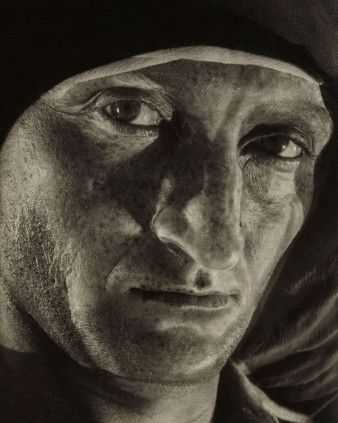
Helmar Lerski, photography.
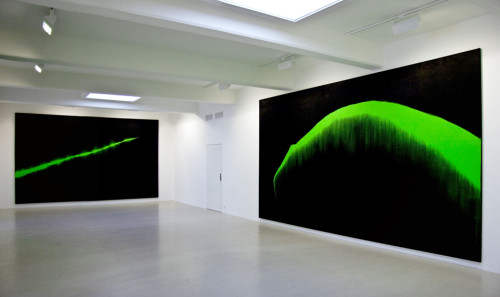
Daniel Lergon, at the Christian Larsen gallery.
A good deal of this loss of imagination, and I am speaking of a specific kind of imagination (more on below) is linked directly to marketing, to TV and film and the internet. And it has to do with the way in which personal histories become embedded and re-shaped by the mass cultural revisionist history. My history is like everyone’s history. Everything historical is homogenized. The very idea of anachronism seems almost quaint.
Now running contrary to much of the abuse being thrown at contemporary art, and most of it justified, I think it worth pointing out that in fact, galleries at least (less so museums, today, which are like amusement parks) provide a space of austere quiet. Well, many do. Yes there are the omnipresent white walls, and polished wood floors, are all the various design elements are fungible, but still, it is rare to find space in today’s urban landscape in which ideas of contemplation are encouraged. There is a latent progressive dimension to art space, to galleries now. I think we have pushed through the looking glass and come out on the other side, where even if unintentionally, the gallery takes on something akin to the sacred. Even if the art is awful, and it usually is, it still retains something otherwise lost.
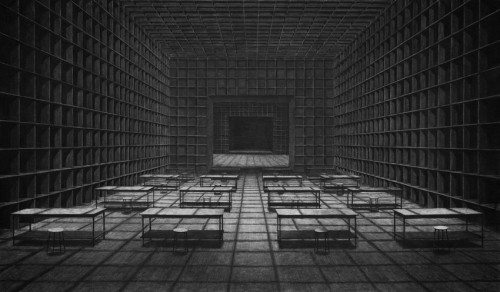
Levi Van Veluw
For all that is wrong with Freudian theory, I’ve yet to be convinced that the basic tenents of psychoanalysis are not correct. But certainly there have been radical adjustments to traditional psychoanalytic theory; most importantly in the persons of Wilhelm Reich, and later in Lacan. Still, there is no question that we live in the age of the therapeutic. And it is worth distinguishing between therapy and psychoanalysis. One of the contradictions in play today, in terms of perception, is to hear that the clinical side of psychoanalysis doesn’t work. At the same time ever more people go to therapists. So probably one needs to define what is meant by “doesnt work”.
This is the fundamental problem, I think. As Rob Weatherill puts it; “One no longer just goes for help. Instead, one enters a whole ideology of caring.” This includes the obvious almost comical array of support groups to the individual specialists. There are rehab centers for every possible addiction, and there are therapists for the very rich and there are many for the very poor. There are court accredited clinicians and there are lay practitioners. But beneath the surface of all this, for all this desire for self improvement, or for the relieving of psychic pain, is, I think, two related phenomena. A feeling of impotence and a desire for social connection. Many people I’ve known went to group therapy sessions to simply be around people. The AA/12-Step phenomenon, now so popular in mass media representations, is also clearly a social event. I know a lot, LOT, of people who got work in Hollywood from their contacts at AA. There is a kind of self indentifying that is connected to a treatment of the idea of tolerance; a regulation of what kind of pathologies are acceptable. In fact the word *tolerance* is usually, almost always used to deal with a designated social problem in isolation. As a cheap substitute for actual justice and equality. It is also, on a state level, an idea that is used to argue this idea of civilizational superiority. And this takes us, inescapably back to what Losurdo’s speaks of in the quote above. AA-12-step is an acceptable behavior and acceptable treatment, and hence tolerated, officially. Methadone is not, suboxone is not, and self medicating never is *tolerated*. Embedded in here is an idea, a default setting that suggests the West, the U.S., and western Europe, are backdrops for normalcy, and as such embody the best aspects of being human. Histories of slavery are literally erased. Wars of aggression are erased. Exploitive trade and barbaric sanctions are erased, and are replaced with individual issues that almost always extend no further than a single corporation. Such as Nike uses sweat shop labor. Oh, golly, lets correct that. And then an empty political or electoral ritual is carried out, and nothing changes. Sweat shops still exist. In fact they are growing. So, the question of what ‘works’, when discussing therapy, is flawed in a sense. Relieving pain should be sufficient. To what degree therapy does this, I think, is impossible to know. For how long does such relief last? Again impossible to know.
This feeling of impotence is tinged with a deeply suppressed anger. And it is an anger that I feel is, in reality, very close to acute anxiety. There are no institutions in the contemporary world with any credibility. Nobody reveres the government, the courts, the arts, the school system. Those few who do are usually of this special sub section; the angry white male. But not all white men are angry white males. In any event, despite the public rituals of fawning and gushing worship of Patriotism, the military, and the police, not to mention celebrities in general, there is very little deep belief in any of it. For deep belief itself is obsolete.
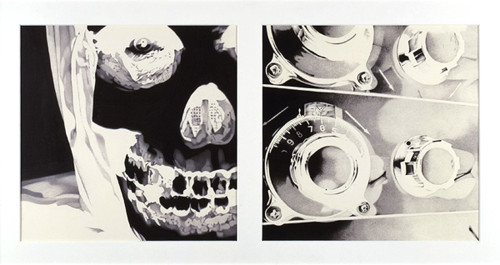
Banks Violette. Mixed media.
The culture of the therapeutic is now mediated by marketing. The rhythms of all consumption are altered; the industrial age of punching the time clock is replaced, at least as an idea, by no time. By the ever present NOW. Of course the reality is that many, many people punch clocks. But such low end wage slavery is mystified a bit these days. But what I’m getting to is that contemporary art has retreated from the real world, and this retreat has taken a very specific route. The emphasis on surface is a sort of psychic embalming. There was a very good review of David Lynch’s Blue Velvet here http://www.thecityofabsurdity.com/papers/pfeil1.html
In a sense, Blue Velvet was the culmination of something that began with Warhol and Pop.
“Life continues in its simulated form as heritage.”
Rob Weatherill
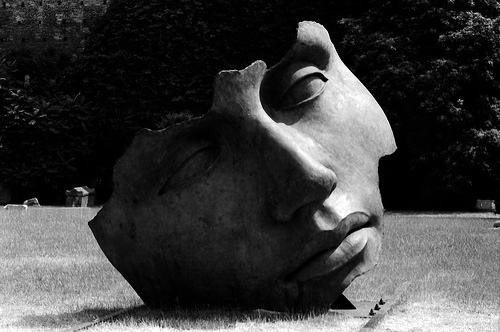
Igor Mitoraj
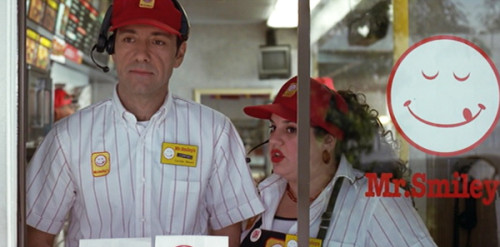
American Beauty (1999), Sam Mendes, dr.
The real world feels pale and inadequate in comparison. The dream-like aspect of such films as Blue Velvet is actually obscured. It is an reductive idea of a dream, one without terror or sex. The sexual images are in fact very close to glossy magazine lay outs advertising Brandy or luxury watches. Lynch is in a sense the Dali of our time. A reactionary court approved curator of ruling class pathologies, repackaging them as ironic and with pseudo surreal ‘effects’. The real heritage of rich slave owners, plantation systems, coercive use of immigrant labor, and wholesale union busting is invisible in popular culture. The degree to which network TV and Hollywood film reflexively adheres to U.S. state department propaganda is astounding. But, to return to this idea of psychoanalysis and popular culture, there is a marked strangeness in how children figure into master narratives. Children are either sentimentalized as in Speilberg, where in fact they appear as small immature adults, or they are rendered as ciphers, because no longer are children in the West destined for work in factories or fields, except for the very poorest, and hence seem to have no narrative role. Hence there has been the cultural invention of a new ‘childhood’. The sentimental version is one of white suburbia. The Harold Ramis and John Hughes vision. In which adults like act children and children act like adults. The other depictions are opaque, mostly. But they exist against a particular backdrop created to accommodate them. The landscape of new childhood.

Bethan Huws, photography.
Contemporary society seems acutely ambivalent about children. For the affluent, children are groomed for success while serving as symbols of success for the parents. The parents are successful parents. Exemplars of good parenting. The successful child is one who exhibits the most opaqueness. One who fits into a fabric of images that constitute the mosaic of financial security. Both the children of the poor, at least in some cases, and the middle class (working class but not lumpen) and the rich all were now given new spaces in which to be protected, essentially. Playgrounds, after school centers, sports clubs, and for the more affluent there were private tutoring in all manner of recreation activities. But as Rob Weatherill points out, such segregation allowed for children to become objects of marketing studies and behavioral experiments. Children at this point, sometimes after the 1960s, became a target demographic for advertisers. The corrective of protecting children from exploitation in factories or mines changed into laboratories for another form of exploitation, albeit less abusive. But running across all this was an increasingly paternalistic state. And this paternalism of the state was mediated by therapeutic assumptions. For the very poor, not surprisingly, children are less safe than ever. The poor child is rendered invisible, save as occasional symbolic objects of rescue. The poor child is also always a potential criminal. One who is destined to be a criminal unless intervention saves him or her.
In cultural representations, childhood is ever more sentimentalized and reductive. It takes place against this ‘new childhood’ backdrop. The curious thing is that the paternalistic state operates from an assumption of bureaucratic virtue. And a virtue housed in a therapeutic construct. So that everything from vaccination to breast feeding to religious belief is cataloged, and certainly the logical extension of this is that the parents must perform according to the script the State provides. This is the fullest expression of what Weatherfill was referring to when he called this an ideology of caring.
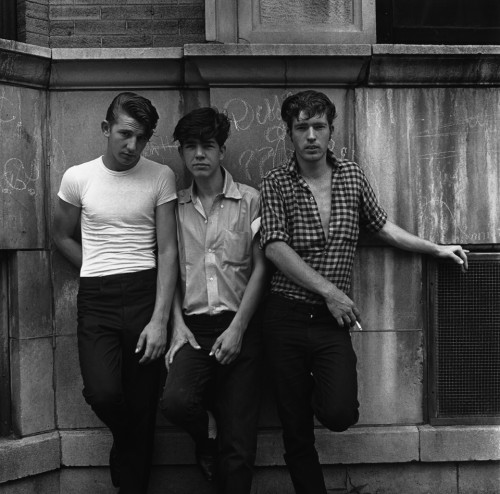
Danny Lyon, photography.
Visit any U.S. city and you will find homeless encampments. Everywhere. HUD figures 610,042 are homeless in the U.S., which is an absurdly low ball figure. In New York, homeless families have increased 86% since 2002. A quarter of homeless are children. California has over 22% of the country’s homeless population. Warm weather states tend to attract vagrant populations. Its tough to survive outside in the north east or midwest in winter. The point is that this reality can only be treated in paternalistic narratives of redemption. One does not see homeless narratives in which, finally, the homeless man or woman simply dies. Diseases of insanitation and malnutrition are common among the homeless. Today, increasingly, the reality is that the state is banning people from helping the homeless or hungry. All impulses, those that are left, toward empathy, are to be eliminated. Self sustaining activities like collecting rainwater result in jail time. Vegetable gardens are destroyed by police. The state and these irrational compulsive policies of abuse are absent from media for the most part. Now, to return to therapy; it intersects in a hugely significant manner, with homeless populations. Mental illness is prevalent among the homeless. But where do cause and effect meet in all this? Does living on the street create or exacerbate mental instability? What does that even mean, though? Anyone living on the street is in a sense suffering mental instability. That is the definition of such vulnerability. Such grievous hardship wears people down. Are there sane people living in cardboard boxes? These definitions are meaningless. The majority of homeless are perfectly sane, of course. But the truth is, anyone with problems holding a job is by state definition mentally ill.
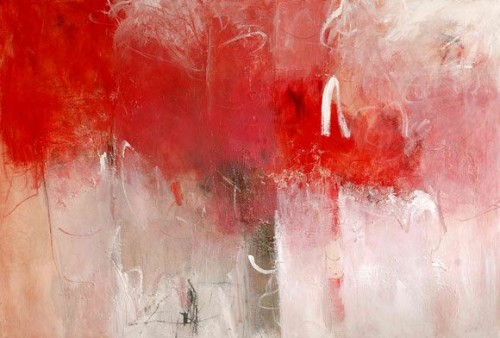
Farideh Lashi
As a side bar, in California prisons the mental health issues of convicts are handled (in 90% of cases) by CFMG (California Forensic and Medical Group). This is a company under guidance of the ghoulish Dr. Taylor Fithian. CFMG makes a lot of money by minimizing actual (and costly) psychiatric and medical assistance to convicts. CFMG was bought out two years ago by HIG, described in article by James Kilgore, this way:
“HIG’s core activity is buying a company, restructuring by cutting costs and paring down the workforce, then reselling at a higher price. Beyond CFMG, its investment network includes holdings in pharmaceuticals in Michigan; women’s fashion retailers in California; fast food chains and prison food service in Britain; retail grocery stores in Finland; debt recovery operations in Italy; ice cream and digital display panels in Brazil; and boilers and industrial piping in France. It has partnered with Goldman Sachs, Morgan Stanley, Deutsche Bank, Verizon Communications and Liberty Mutual.”
and
“HIG’s carceral holdings do not end there. Its appetite extended to the 2012 purchase of Trinity Services and its subsidiary, Swanson. Both of these firms specialize in providing food products to incarcerated populations. With annual revenue of $47 million, Trinity focuses on the provision of “care packages.” Tightened security in the era of mass incarceration has eliminated the ability of people on the outside to send personal packages to their loved ones behind bars. Now, instead of homemade cookies or hand-knitted socks, parcels come from corporate providers like Trinity Services. Family members go online, put the items in their shopping cart, pay through online prison banking system J-Pay, and send off some combination of overpriced items like Top Ramen, candy bars, instant coffee and deodorant. Like prison phone calls, these packages provide an opportunity for people to remain connected to their incarcerated loved ones while depositing millions into the coffers of the service provider.”

Jon Lowenstein, photography. Oil Sands, Alberta Canada.
What does therapy mean in this context? In this world view? What does psychiatric policy mean, or the idea of ‘not working’ mean? Now, this returns me to ideas of representation. Bear in mind, too, that HIG also bought voting machine vendor InterCivic, as well as contributing hugely to Mitt Romney’s campaign. The therapy of the deep state. Where are such stories in mass media? Lorna Rhodes in her book on U.S. prisons, Total Confinement, writes…” …there are strong traditions that push this process toward abstraction, making ‘mental illness,’schizophrenia’, or ‘post traumatic stress’ as thing-like as possible. At its most elementary, however, the process by which someone comes to be seen as mentally ill begins when ‘intolerable’ behavior is reframed as opaque enough to become the province of experts.”In other words the most generalized notions of deviant behavior are accessible only to special mental health experts hired by the prison, who function from a perspective closer to the 19th century, and who lean on societal ideas of accountability as it exists outside prison walls. The cynical nature of this process is all about financial expediency, and raises serious questions, again, about the paternalistic state. And more, the lifting of contextual factors having to do with people forced to live in small boxes. *Intention* becomes a very blurry issue.

Alan Pogue, photography. ‘Boy picking collards, Mission Texas’.
So, to return to the idea of psychoanalysis, and philosophy, and art as it relates to mass culture. The post modern theorizing that arrived after Derrida, has felt, even the sharpest of it, strangely exiguous and somehow too meager. Perhaps it is simply the sense that philosophy reflects some fractal of reality, even the worst of it. It also influences the course of future thinking. Today, there is a lack of substantive feeling in thinkers whose work feels too dependent upon and linked to academia. But it goes back in another sense to the late 70s. The end, sort of semi officially, of modernism. It corresponded as well to the ascension of Reagan and Thatcher. The beginning of *post* everything goes back a bit further, perhaps to the end of the 60s or start of the 70s. Reagan was the simulacra President. Americans elected this non person twice. Thatcher was the U.K. variant. Her lacquered hair and waxy emotionless face were much like a cyborg. Reagan and Thatcher were ushering in their own post reality society. This was to be the era of the simultaneous loss of objective truth, and the hyper authority of scientific measurement. That they contradict each other is, it seems, beside the point.
My own sense is that something profound has been lost over the last forty years. Something sensual, but more than that, something that allowed for sincerity and enthusiasm. A deep and perhaps even naive enthusiasm. When I read Wittgenstein, or Adorno, or Herman Broch or even Sartre, or Bernhard, and Pinter and Ionesco and Genet, I am connected to those meta narratives that everyone seemed so eager to do away with. Reading Marx now, or Freud, I feel something of a weight, the psychic equivalent of clear skies and clear mountain lakes, or open desert horizons. When I read, or try to read, Agamben or Badiou or even Ranciere, I feel I am in a room in some cheap public housing, or cramped on a crowded bus or subway car. But this is more acutely felt, I think, in art. For Adorno was right about aesthetics and philosophy merging. Theatre as a form of thought… yes, but I suspect the sincerity of painting from mid century finding itself closed off is also very costly. Peter Brook, and Herbert Blau, and Fassbinder and Pasolini, and Pollack and Newman and even Noland, and James Wright and Bly and Lorca and on and on…this is appreciably different than Rachel Kushner and Jonathan Franzen. And its different, too, than Dennis Cooper, or whoever else is occupying that alternate niche today. But forget modernism, because I suspect the cure, if that is what is called for, is found further back. Dante and Shakespeare and Milton and Donne, and Rabelais and Cervantes and Sophocles. The very fact that classical French drama, the time of Racine, may in truth be unavoidably boring on some level; my experience of it today is always heartening — for it is expressive of a sort of spiritual ambition that this culture has lost utterly. My *boredom* becomes an object of contemplation.

Nelson Molina, soap sculpture. (Prison Art).
But to try and link these feelings back to psychology and public health — and in turn to mass cultural representations — the ideas of the mid 20th century were foundational for public policy over the next forty or sixty years. As Hobsbawn said, the middle ages actually ended in the 1950s.
“Therapy is tourism on the inside.”
Rob Weatherill
Last comment thread, there was rancor about the idea of early man not exhibiting collective violence until scarcity coerced such behavior. I still think that’s patently wrong. The early figurines of female deities were likely about fertility on some level, but that hardly explains much at all. Why are their carvings of such female deities? Why are there carvings at all? See, I’d argue this is directly related to a state today in which people have a hard time identifying the question they’d like to ask. Ask of whom? Authority. Even the most radical leftist will appeal to the authority of science, and *studies*, and accredited findings. As Jameson said, figures and elements in narratives can bear many separate and different meanings, and different functions. What he called the ‘conspiratorial text’, which is an aspect of ALL narratives and all artworks, I would argue, and which I think Jameson agrees with. And that would include those figurines. The conspiratorial text is “an unconscious collective effort at trying to figure out where we are and what landscapes and forces confront us in the late 20th century whose abominations are heightened by their concealment and their bureaucratic impersonality.” Jameson is speaking of film, but I’d argue this, in various ways, exists across all mediums.
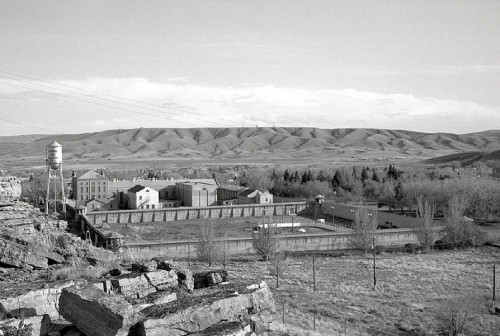
Herman Kreiger, photography. ‘Old State Prison, Wyoming.’
In a more nuanced manner this is what Adorno is saying, but like Jameson these theories beg questions that go back to the Bronze Age and earlier. What Jameson is saying about Conspiracy narratives is essentially what I’ve said about crime narratives. All stories are crime stories, and all stories hint at conspiracy. What is important is both to know the truth of conspiracy, but also to recognize something of one’s inner workings by posing such questions. To know that our sense of self is located in our specific historical moment. This is, of course, highly psychoanalytic. And probably mostly Lacanian. Or at least it’s my reading of Lacan. The world allegory runs on suspicion and paranoia and guilt. Everything means something else. Behind every truth lies something hidden. Or secret. And our own certainties are all laced with that absence born of infant unease and frustration and rivalry. As blissful as infants can look, the reality is always our own ambivalence about infants, (and probably infant’s ambivalence about us) and our own buried long forgotten history. Our amnesia. As the Zen parable has it; before enlightenment the mountain is only a mountain, but as you awaken, it becomes something more. Once enlightened, it is only a mountain again.
This is important because the collective system of Puritanical ruling class slave justifying Imperialist overlords insists on a certain collective societal amnesia, as well as enforcing a rule of abusive indifference and control. Like the prison mental health expert, the state defines what is materially real. On the individual level, that story, that revisionist Orwellian project, co-exists with our own search for why and how the idea of conspiracy even came to exist. But more than that, as Jameson rightly observes, the magic realism of Carpentier or Marquez or Raoul Ruiz was unnecessary because the un-even development of the global South, had imprinted all consciousness with the bedrock for contemporary surreality. Psychoanalysis, in the original middle of modernism incarnation was tapping into something that Kafka and later Lacan both recognized: that our unconscious is partly a mechanism of search, and partly of lack. The uncanny was the perfect expression of this meeting of parts.
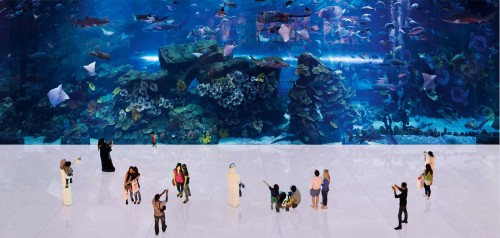
Tor Seidel, photography. ‘Dubai Mall Aquarium’.
The films cited by Jameson include Pollock’s Three Days of the Condor, a revisionist politicized ode to Hitchcock. But he adds a salient observation about the opening credits. Credits today recuperate the viewer’s history of reading narrative and provide a space in which to establish habits of interpretation. This can be seen in almost all HBO shows today, too. The Pollock film stands, still, as the best pure conspiracy film of all time, probably. For it hits every button of association for the contemporary Western viewer. The point here is articulated by Jeanne Willette:
“As a cultural form, film is permeated by marketing and lives and dies on its particular modes of production and distribution and the carefully calculated effects upon the audiences. Cinema involves what the theorist called “cognitive mapping” or the psychology of the “political unconscious.” “ Cognitive Mapping,” with Jameson, who was always conceded with the connection between film and politics, is a metaphor for processes of the political unconscious.”
This is the reason that film, in good measure, is so given to uncanny effects. But there are issues of cause and effect, too. The post reality consciousness is shaped by film and TV. Discourse takes place within a model of the Real established by screen narrative. Production and profit notwithstanding, film (the conspiratorial text) hides both individual and collective effects.
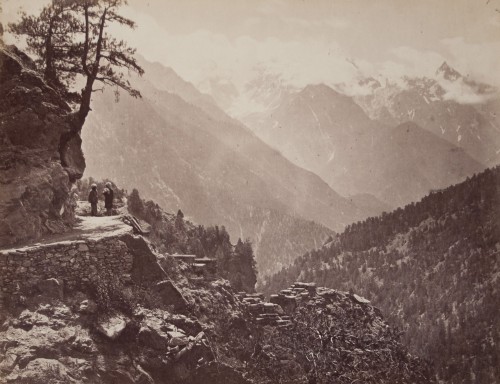
Samuel Bourne, photography. Tibet, 1860s.
Willette again:
“Film is both a mode of production and an art form, a form of creation and a commodity—the difference is impossible to distinguish and therefore the “movies” are linked to never-ending attempts on the part of the dominant class to reinforce ideologies that reified human beings. Film in the Postmodern era could never be modern or new; it can only be allegorical, endlessly attached to a past that never was.”
The uncanny returns over and over in all aesthetic discussions, today. Kristeva’s notion of the abject, is relevant, too, I think. For all of this is a search to track the individual and its intersection with the social/historical. If creativity is being diluted, then what effects result both socially and individually?
There are a host of questions implied in the recognition that exclusion is a primary strategy of the ruling class, today. Literay motiffs such as the stranger are effected, and this leads back to the erased history of society. For the stranger is going to always be an emissary from that real world that has been rendered invisible. The post modern notion of there being no outside is wrong, proabably, both figuratively and literally. The Stranger is opaque, much like the children of the affluent in representations. If film is the conspiratorial text, as Jameson has it, then the Stranger is a messenger from both our abjected pre-Oedipal selves, and from the stigmatized and suffering global south. The uncanny is also a part of the post colonial experience (Bhaba)…and to that extent a product of Western visions of an outside so effectively erased. But it has more than a single meaning. Derrida is no doubt correct, in this sense, when he suggests Marx is now the spectre of uncanniness. For the Utopian is exiled, but never effectively erased. The repressed always returns.

The themes discussed here are truly deep and important; they are constantly on my mind these days but are almost impossible to describe for many because of a lack of context or comparison, especially as Western empire destroys cultures and replaces them with a revised monoculture.
I was privileged to live in rural Africa for several years and tho this was almost 30 years ago, I keep using it as a reference point or touch-stone/proofrock. Why? For me it stems from the belief that our original societies were based much in the same way: along familial/tribal lines, agriculturally-based, where one was born into a society that cared for its members from birth to death and where one always had a home as well as deep and lasting friendship/kinship.
All of this has been destroyed by the industrial revolution and capitalism. We are now nomads within the Economy, going where there is work (if it exists) and abandoning our few friends and micro-family (if they exist). Gone are the deep roots and strong fabric that grow/are woven from growing-up with a large group of children who become lifelong friends, partners, co-citizens, etc. Empire knows as much and is why it expends so many resources in destroying societies that are close-knit and self-reliant.
We are more pliable as individuals than as groups.
Those children that are attuned to this whether thru empathy or some sixth sense are aware of what awaits them as much as animals in line at an abattoir. There is a fear that I see in my own teenagers as they ponder “What should I *be* or*do*?” as if such questions were once asked by our ancestors living in common. We only matter now if we are useful in some way to the Economy. If not, we are insane and become homeless; allowed to sink to the bottom of society. Those children who buy into the current narrative (pushed/lured into doing so by their parents) are rewarded in varying degrees based in part on their social station. Sure, there is some upward-mobility but not much and it is only meeted out to those who conform. In a sense then, parents are complicit in perpetuation of today’s “criminal” society. We keep horrid truths hidden from children less they see the abattoir too soon and get spooked by a reality their young minds can’t process for lack of reference (tho, as stated, there is some deep sense of loss or longing for an older time/way of interaction).
We have lost, in my opinion, our way of simply living/existing as humans that create. Today we must rationalize our existence by our usefulness in what we create/contribute to the Economy. It is no longer for ourselves or the good of one’s community. Marx was correct then in how capitalism alienates. The questions remain: how to save ourselves? Can we “go back” and reivent what was stolen from us? How to survive in a society that exists via exploitation of humans/animals/environment? Have we all become insane?
I actually think the *boredom* you attribute to classical French drama is a common characteristic of French creative expression in general, and it’s not a negative element, but something merely indicative of the Gallic sensibility which differs from the Dionysian nature of much German expression. Perhaps it’s a cerebral search for the truth that requires one to wade through all the verbiage whereas the Germans tend to lay all their anger out on the table. The Gallic approach tends to be more Apollonian in a sense. It’s there in Balzac, in Debussy, in Jean Renoir, in much Impressionist painting and so on. They seem to be intellectualizing their way through the creative process in a sense.
@robert……..thanks. “Economic nomades” is a great term.
@remy…..even French porn is mostly talk.
so much, again but to start
I have to share this as an example of how bad things are in the spectacle:
http://motherboard.vice.com/read/making-babies
an illustration. you write:
“But, to return to this idea of psychoanalysis and popular culture, there is a marked strangeness in how children figure into master narratives. Children are either sentimentalized as in Speilberg, where in fact they appear as small immature adults, or they are rendered as ciphers, because no longer are children in the West destined for work in factories or fields, except for the very poorest, and hence seem to have no narrative role. Hence there has been the cultural invention of a new ‘childhood’. The sentimental version is one of white suburbia. The Harold Ramis and John Hughes vision. In which adults like act children and children act like adults. The other depictions are opaque, mostly. But they exist against a particular backdrop created to accommodate them. The landscape of new childhood.
Contemporary society seems acutely ambivalent about children. For the affluent, children are groomed for success while serving as symbols of success for the parents. The parents are successful parents. Exemplars of good parenting. The successful child is one who exhibits the most opaqueness. One who fits into a fabric of images that constitute the mosaic of financial security. Both the children of the poor, at least in some cases, and the middle class (working class but not lumpen) and the rich all were now given new spaces in which to be protected, essentially. Playgrounds, after school centers, sports clubs, and for the more affluent there were private tutoring in all manner of recreation activities. But as Rob Weatherill points out, such segregation allowed for children to become objects of marketing studies and behavioral experiments. Children at this point, sometimes after the 1960s, became a target demographic for advertisers. The corrective of protecting children from exploitation in factories or mines changed into laboratories for another form of exploitation, albeit less abusive. But running across all this was an increasingly paternalistic state. And this paternalism of the state was mediated by therapeutic assumptions. For the very poor, not surprisingly, children are less safe than ever. The poor child is rendered invisible, save as occasional symbolic objects of rescue. The poor child is also always a potential criminal. One who is destined to be a criminal unless intervention saves him or her.
In cultural representations, childhood is ever more sentimentalized and reductive. It takes place against this ‘new childhood’ backdrop. The curious thing is that the paternalistic state operates from an assumption of bureaucratic virtue. And a virtue housed in a therapeutic construct. So that everything from vaccination to breast feeding to religious belief is cataloged, and certainly the logical extension of this is that the parents must perform according to the script the State provides. This is the fullest expression of what Weatherfill was referring to when he called this an ideology of caring.”
look at this
http://www.washingtonpost.com/local/free-range-kids-and-our-parenting-police-state/2015/04/13/42c30336-e1df-11e4-905f-cc896d379a32_story.html?wpisrc=nl_evening&wpmm=1&utm_content=bufferb2653&utm_medium=social&utm_source=facebook.com&utm_campaign=buffer
“free range kids”
so the construction of kids as these accessories, enclosing them at home and shops to trap them with television and xbox ads, also is accomplishing the enclosure of public space, city streets that no longer feel like “the neighborhood’ belonging to the residents, but this extension of the mall hallways,the private domain of capitalist overlords. Are these kids offending, by in a sense trespassing on the streets? the panic that is to designed advance from a very young age the Mean World Syndrome has all these myriad effects — the home to work to home circuit where one produces and consumes, but also the frightened imperial mentality. Caged people, people in captivity, becoming more and more submissive and dependent. The independence of children developed early threatsn perhaps the work of learned helplessness – political learned helplessness – carried out by the spectacle of disinfotainment and pseudo politics targeting teens and up.
@molly;
Yes, I think when you look at the design of malls now, there is a sense of making them appear more as an outside, that happens to be inside. A faux neighborhood. So instead of walking the streets, they walk the corridors of the mall. But also, this goes back forty years or so when pre planned communities really spiked and this was white flight suburbia, and these areas had no sense of history. No community. They were all built after the people who were now living in them. They were and are hugely alienating. Nothing feels as if it belongs to the residents.
Everything is being tresspassed on, and I remember when i first lived in Poland, I was in a small city called Kielce. I was struck by how there were no *dont sit on the grass* signs …everything felt so less regulated. Now in the US there is apprehension for youth when going outside. I spent my entire childhood on a bicycle, roaming the streets of los angeles. I would go out, during summer and be gone for ten hours. Thats inconceivable today. For many reasons…..but not the least of which is that there is no place to roam. There are restricted enviroments designed for certain activities (usually including shopping). Thats it. So the young learn restriction, and as you say, dependency. And a very logical paranoia.
The “Free-Range” kid article is scary. In the discussion thread I found this chilling comment:
These parents are all set with their reality TV show. The kids are “free range” just like Truman from ” The Truman Show”. Instead of being supervised by parents, they are being set up to be followed by camera all day.
At the core is fear. There are so many comments of the “what about the child predators” variety in the thread — it’s this fanatical belief that the increasing rationalization of society MUST be for our own good.
yes the fear of the predator, while abductions by strangers are at an all time low – lower than when John cycled around LA, or when I by six or so stayed out all night in the summer in the neighborhood playing flashlight tag with all the kids from the neighborhood, on a patch of maybe 2 miles square beyond which the little kids were told not to venture. But its simply insinuated that we are alien to our own environment, we are like increasingly alienated and not at home in our own world, which is enclosed and owned; Truman Show with that instilled fear of drowning and the fake sea…soemthing like this is being ver subtly implanted. The outlawing of the homeless that the sheltered were encourqaged to feel was for them, for their lifestyle — that antagonism was icnreasingly sharpened in the spectacle – was in fact an assault on everybody, for by outlawing the homeless, the common spaces were enclosed, but it proceeded stealithy.
robert said above “Empire knows as much and is why it expends so many resources in destroying societies that are close-knit and self-reliant.
We are more pliable as individuals than as groups.”
That’s the key.
movies trace this…the splitting of the public into antagonists, and then the figuring of humanity as terrorized helpless individuals menaced by malicious, feral groups and only saved by an almost abstract, highest authority embodied often in the film’s structure and plot itself, its machinery of fate that always restores the distrubed order….After Hours, the manifesto of tribeca gentification.
Jameson’s “the conspiratorial text” you mention there, with its horrifying impersonality (he does a reading of Dog Day Afternoon I remember which made the case that the way the bland public spaces are shot at the end exporesses this.. I wish i recalled bgetter. but is it surveilled punblic space? Office? Airport? that sort of creeping enclisure but the unseen Authority)…I think Jameson overlooked to a point the intensity of the stuggle staged in that film and others of the 70s between the humanity and capital, and ***conscious*** (not politically unconscious) understanding of the process of expropriation and enclosure, the forcess of dehumanization resisted consciously if inadequately by human beings. Jameson himself seems to identify qwith that unseen machine of enclosure and exploitation and his critical method mimics it….he;s always erasing the creators, denying their skill, will and intention, imagining his role as a priest to divine and recognizes the wisdom god has spoken through the unknowing vessels that are Sidney Lumet or Jules Verne. He;’s supposed to be a Marxist but its such a Hegelian quirk that he finds no connections between the concrete practises of film production that precede his consumption of these artifacts of encrusted meanings and wihcb those creators are expert and the way the world they replicate and portray., distorted and insightful, handles and envisions control, authority, industrial organization, technology, workplaces, politics, power, greed. As if “Hollywood” is a brain in a vat dreaming capital.
I saw the movie Carlos recently; its very good, (the actor was in the enjoyable but flawed Bolivar biopic Libertador, i forget his name); there;’s a scene where Carlos and his accomplice just walk into a German airport with a shoulder held missile-launcher and fire a missile at an El Al plane from one of the passenger terminals overpass walkways busy with people.
Its hard to believe that the cultural change that mnakes this unthinkable now was accomplished with such cartoonish tactics….eeevilislamix….the endless cocaculture serial killers…Each example is easily debunked as absurd –
oh nobody takes this seriously! — but the mass of it, the endless streams of evil threats of all kinds, leave a mark, even if every single one is laughed away, the hovering phantom of the total, the Omipresent Evil Threat, like Satan, somehow remains, and justifies the most ridiculous arrangements that are also genuinely evil, disguised as the counter-evil.
I have a lot of problems with jameson. A lot. But I do think he is always worth reading somehow. He’s odd that way. The conspiratorial text though has a lot of validity in some respects. Im not sure if its in the way jameson imagined, however. I was sort of extrapolating from it. But….here is the first thing: Hollywood now nakedly, openly, promotes just wholesale authoritarian values, and also invents a revisionist history. The other night I watched the loathsome Madame Secretary where, amid Russia bashing, there comes a small but significant aside, on the greatness of john foster dulles. This is something that would not have happened forty years ago. Or thirty even. Dulles was seen as a rabid reactionary cold warrior. Now he is suddenly the savior of mankind. The savior of America! They even mentioned ‘The American Century’. But this sort of thing occurs across the board. The creators of this junk have been infiltrated by political hacks…friends of the Clintons and they all are friends. Nobody in Hollywood dare express dissident opinion. Such is the fear of not working. Its just a tacit censoring of all opposing voices. its so much easier to make Imperialist propaganda. And the default setting is to praise all US military actions as heroic and necessary. And if there is a plot that includes US military mis-deed, it is carefully placed within a wider landscape of American virtue. Its rather amazing, actually, to see how uniform are the opinions expressed. There is no dissent in Hollywood of any kind that I can see. Not overtly anyway.
The manufacturing of fear is obvious. Its embedded in almost every drama on TV now and in most film. If you watched only TV you would think there were drug dealing gun toting psychopaths on literally every corner in America. And serial killers in every apartment block. The constant recycling of menace and threat. Of danger and the creating of a hostile landscape.
I worked with brad evans for a while on a study….which was later dropped….on airport space. The ultimate securitized public space. And within that space, there is a careful training of behavior. I mean one is now asked to essentially disrobe, open one’s bags, and beg for entry. You pay all this money to go be humiliated and abused. And nobody questions it now because there is such, understandable , fear about questioning these things. You *expect* to be interrogated, even if just briefly. And then subjected to strip searches….and all the while one is being recorded and indexed and under multiple surveillance. Anyway…..I think there has been a rather dramatic shift over twenty years in the experience of public space. The public now is acutely aware, when outside, of not creating disturbance.
There are contradictions within all this. Thats partly the conspiratorial text, which often betrays the intentions of the creator. But whatever the intention, the effect is sometimes quite opposite. But its always only isolated….there is a poetics of film that creeps into certain things, but this is rare I think. Mostly one finds just shockingly fascistic narratives of domination, and of almost colonial values — the poor are simply depicted as an infestation, a potential pandemic waiting to happen. There is a meta level on which this paranoia seems to operate. Its almost a backdrop to even narratives unrelated to threats……a given. The given of some sort of plague, something that might run out of control and destroy humanity. Even love stories are permeated with menace. The over determination takes different forms, but if there is romance, there is usually a sense of being found out, or its somehow illicit, and this is doubled because the threat of discovery becomes the THREAT of more than just discovery. The betrayed husband say or wife becomes a kind of symbolic pathogen; so that pleasure is always, also, dangerous, and reckless. Romance always triggers anxieties. Not personal, but almost cosmic. Its increasingly bizarre.
If all stories are crime stories I think they are equally confessional. A guilty conscience needs to confess, in the Camusian sense. Americans are the most self absorbed race on earth. I think that explains why their poetry is so inward. No wonder they fall down on the job of politics! In South America only the poets have the words to describe the horrors there; and the people look to them for truth, and the courage to publish them. Not that there’s anything wrong with the American confession, but I wonder — as a kid I watched Playhouse 90 faithfully. It was extraordinary! Hard hitting, original drama about the American experience: A guy from humble origins wins a million dollars in Las Vegas and delivers an extraordinary soliquy on growing up poor in the midwest to the gamers around him before collapsing dead of a heart attack; a tailor’s son in Manhattan has a nervous breakdown when a neighbourhood bar gets torn down; Richard Boone in a western adaptation of a Chekhov short story. These were great. I wonder if America has run out of stories..?
@kevin.,
Yeah, its very hard to find those old hour and half-hour dramas from the 1950s, but they were amazingly good. You are quite right. Nothing, NOTHING like that exists today. I went to a screening of old half hour anthology one offs from the mid 50s./…many rare pieces featuring great writers, actors like lee marvin and ralph meeker and the people i was with were stunned. They’d had no idea such stuff was ever on TV. It changed almost exactly at 1960 or 61. Studios and networks suddenly decided they had neglected TV to a degree and they imposed a sort of cookie cutter mentality and starting dumbing down the material. And there was already plenty of junk, of course.
Anyway, richard boone was a great actor and he had organized a company of actors to do an anthology show. As if it were a traveling theatre company. Didnt last long but was of high quality. Today, you cannot even think that way because its seen as somehow uncool, and of course not profitable. Which its not.
i do think there is a slight confusion in all stories are crime stories….vs confessional. A confusion of category, but only to a degree. But you are certainly correct, I believe, in this desire for the bourgeoisie to explore its own neurosis and then confess to it.
Yes, and Paddy Chayevski is on that list. I didn’t get Network until last year when I realized we were living it. ..